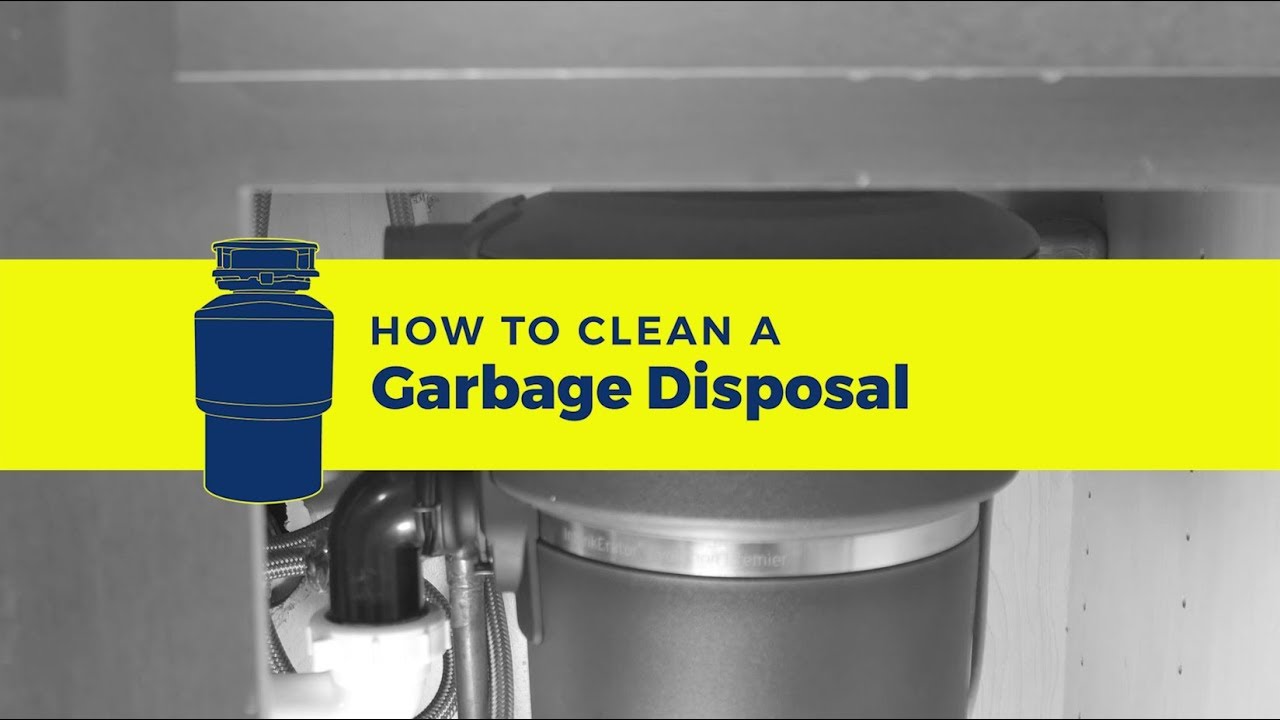The Ultimate Guide How to Clean Garbage Disposal Like a Pro
Your garbage disposal is a silent hero in your kitchen, grinding away food scraps day in and day out. But have you ever thought about giving it a little TLC? Regularly cleaning your garbage disposal not only prevents foul odors but also prolongs its lifespan. In this comprehensive guide, we’ll walk you through the process of cleaning your garbage disposal like a pro.
Understanding Your Garbage Disposal:
Before diving into the cleaning process, it’s essential to understand how your garbage disposal works. This knowledge will help you appreciate the importance of proper maintenance.
Garbage disposals consist of several key components, including:
Grinding Chamber:
This is where food waste is broken down into smaller particles. It’s crucial to keep this chamber clean to prevent clogs and maintain efficient operation.

Impellers or Blades:
These sharp blades or impellers help in grinding food waste. Ensuring they are debris-free is vital for optimal performance.
Drainage Pipes:
These pipes carry the ground-up waste to your sewer system. Any blockages here can lead to unpleasant backups.
Signs Your Garbage Disposal Needs Cleaning:
Your garbage disposal won’t raise a red flag when it’s dirty, but it does send subtle hints that it’s time for a cleanup. Pay attention to these signs:
Persistent Odors:
If there’s a lingering foul smell in your kitchen, your disposal may be the culprit. Stuck food particles can create a breeding ground for odor-causing bacteria.
Slow Draining:
Is your sink taking longer to drain than usual? This could be a sign of partial blockages within the disposal or drainage pipes.
Unusual Noises:
Grinding or clanking noises that are out of the ordinary might indicate debris trapped in the disposal chamber or impellers.
Fruit Flies or Insects:
The presence of fruit flies or other pests near your sink is a clear sign of decomposing food particles inside the disposal.
Reduced Grinding Efficiency:
If your garbage disposal struggles to grind food waste or frequently jams, it’s likely due to accumulated debris.
Safety Precautions:
Before we dive into the cleaning process, safety should be your top priority. Follow these essential safety precautions to avoid accidents:
Turn Off Power:
Always start by disconnecting the power to your garbage disposal. Locate the circuit breaker or unplug it from the wall to prevent accidental activation.
Use Protective Gear:
Wear gloves to protect your hands from sharp edges and potential bacteria.
Never Stick Your Hand Inside:
Avoid putting your hand or any foreign objects inside the disposal while cleaning. Use tools designed for this purpose.
Flush with Cold Water:
After cleaning, flush the disposal with cold water for at least 30 seconds to ensure all residues are removed.
Step-by-Step Cleaning Process:
Cleaning your garbage disposal might sound daunting, but with the right guidance, it’s a straightforward process that can be done in no time. Follow these steps to get your disposal in top shape:
Removing Debris:
Begin by switching off the power to your garbage disposal. Safety first!
Using a flashlight, inspect the disposal chamber for visible debris or foreign objects. Remove any loose items.
Next, reach into the disposal with long-handled tongs or pliers to pull out any stubborn clogs or debris.
For a thorough clean, scrub the rubber flaps with an old toothbrush and soapy water. This helps eliminate residue and odors.
Deodorizing:
To banish unpleasant odors, pour half a cup of baking soda and a cup of white vinegar into the disposal.
Let the mixture sit and fizz for about ten minutes. This natural remedy helps break down grease and eliminate odors.
Finish by flushing the disposal with cold water for at least 30 seconds to ensure all remnants are washed away.
Cleaning the Grinding Chamber:
Fill the sink with a few inches of warm, soapy water.
Turn on the disposal and let the water flush through the grinding chamber. This helps dislodge any remaining debris.
Rinse the disposal by running cold water for a minute.
Maintaining Rubber Gaskets:
Regularly inspect the rubber gaskets around the sink and disposal for wear and tear.
Clean the gaskets with a damp cloth and a mild household cleaner to prevent leaks.
If you notice any damage, consider replacing the gaskets to avoid potential issues.
By following these steps, you’ll not only eliminate odors and prevent clogs but also ensure your garbage disposal operates efficiently for years to come.
Preventative Maintenance:
Regular cleaning is essential, but there are also preventative measures you can take to keep your garbage disposal in tip-top condition:
Run Cold Water:
Always run cold water while using the disposal and for at least 30 seconds afterward. This helps flush away any remaining debris.
Avoid Hard Objects:
Refrain from putting hard or non-food items like glass, plastic, or metal into the disposal.
Use Citrus Peels:
Grinding citrus peels can help freshen up your disposal and eliminate odors naturally.
Ice Cubes:
Periodically, toss a few ice cubes into the disposal and run it. This helps keep the blades sharp.
FAQs about Garbage Disposal Cleaning and Maintenance
Q: Is it safe to clean a garbage disposal on my own?
A: Yes, it’s safe to clean a garbage disposal as long as you follow proper safety precautions, such as disconnecting the power and avoiding sticking your hand inside.
Q: How often should I clean my garbage disposal?
A: It’s recommended to clean your garbage disposal at least once a month to prevent odors and maintain optimal performance.
Q: Can I use bleach to clean my garbage disposal?
A: No, it’s not advisable to use bleach as it can damage the disposal components. Stick to natural cleaning methods like baking soda and vinegar.
Q: Is it necessary to run water while using the garbage disposal?
A: Yes, always run cold water before, during, and after using the garbage disposal. It helps flush away waste and prevents clogs.
Q: Can I grind coffee grounds at my disposal to eliminate odors?
A: Yes, coffee grounds can help neutralize odors, but use them sparingly to avoid clogs.
Q: What should I do if my garbage disposal is making unusual noises?
A: Unusual noises could indicate debris stuck in the disposal. Turn it off, unplug the power, and check for obstructions.
Q: How do I clean the rubber gaskets around the sink and disposal?
A: Use a damp cloth and a mild household cleaner to clean the rubber gaskets. Regular maintenance prevents leaks.
Q: Can I put eggshells in the garbage disposal?
A: Yes, you can put small eggshell fragments in the disposal to help clean the blades. However, avoid large quantities to prevent clogs.
Q: What should I do if my disposal won’t turn on?
A: First, check if it’s plugged in and the circuit breaker is on. If it still won’t start, consult a professional for repairs.
Q: Are there any foods I should never put in the garbage disposal?
A: Avoid putting grease, large bones, fibrous vegetables, and non-food items (like glass or metal) into the disposal, as they can damage it.
Conclusion:
Cleaning and maintaining your garbage disposal doesn’t have to be a daunting task. With the right knowledge and a little effort, you can keep your disposal smelling fresh and working efficiently. Remember to perform regular cleaning, follow safety precautions, and troubleshoot issues promptly to enjoy a hassle-free kitchen experience.


